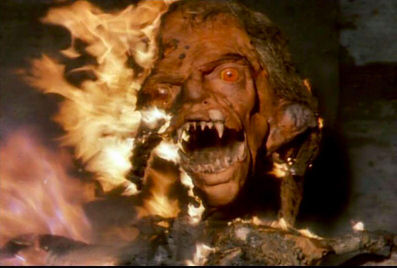It is important to mention that vampires do not “die” immediately when being pierced through the heart. Many vampire hunters have been killed from the mighty death throes of vampires after they have been pierced through the heart. Furthermore, it has been recorded that some of the more powerful vampires were able to remove the wood or silver instrument before “death” occurred. It is recommended that the creature be held at bay with holy objects while the impaling is performed. If someone uses the stake or burns the heart, but fails to cut off the head, the vampire turns into a cloud of fog and reconstitute its body when out of reach.
In modern movies, we can witness that modern vampires are much stronger than their ancestors of Eastern Europe. Anne Rice’s vampires are not affected by the sun; even the old remedies can come short if not followed scrupulously. For instance, if the stake or blade is removed from the vampire chest, the vampire’s supernatural vitality will restore its body in the condition it had before it was destroyed.

A vampire may be incinerated into destruction with extreme heat, but this may prove to be a difficult task to accomplish. They are not immune to fire, but because of their recuperative powers (and the fact that they do not feel pain from fire), this is not a recommended method for dispatching a vampire. Similarly, electrocution may eventually destroy a vampire in time, but this another risky method for eradicating these creatures.
It is also a known fact that when a vampire is destroyed, the body releases a kind of “spectral energy”, which release culminates in kind of kinetic “explosion”, able to shatter glass and windows; toss furniture in the air; and knock an average-sized man to the ground. In cases where powerful vampires or Vampire Regents were dispatched, enormous discharges of pneumatic and kinetic force were experienced. The vampire hunter should be cautious of this phenomenon when destroying “older” or more powerful vampires.








